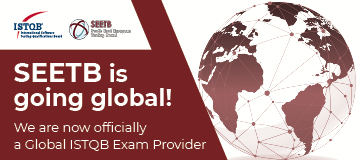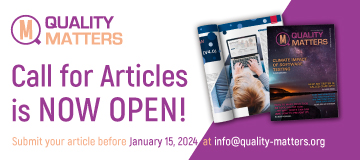
Dr Stuart Reid
STA Consulting, UKDr Stuart Reid is Chief Technology Officer at STA Consulting in Seoul with 40 years’ experience in the IT industry, working in development, testing, and education. While currently concentrating on the testing of AI, application areas range from safety-critical to financial and media.
Stuart supports the worldwide testing community in a number of roles. He is convener of the ISO Software Testing Working Group, which has published the ISO/IEC/IEEE 29119 series of software testing standards and is the co-convener of the ISO Joint Working Group on Testing AI. Stuart previously led the ISO project on autonomous systems for software and systems engineering. He was also co-founder and first president of the International Software Testing Qualifications Board (ISTQB) to promote software testing qualifications globally and he was one of the authors of the new ISTQB certification on the testing of AI-based systems.
Testing Machine Learning Systems
Machine Learning (ML), by far the most popular form of AI, is now the top priority in IT investment. However, from the user’s perspective AI has major trust issues. These can most easily be addressed through testing, but the large volume of new AI software and the lack of testers with the necessary specialist skills are failing to address this growing problem.
This tutorial will provide testers with an insight into the fascinating world of ML development and testing. The tutorial is largely hands-on, but is backed up by the latest developments in in ML testing and reflects the current progress in this area of the ISO working group on testing AI systems. It leads attendees through the experience of both building various ML models, such as neural networks and decision trees, and then testing these models using specialist techniques. These test techniques are focused on three main areas, input data testing, ML framework testing and ML model testing, such as metamorphic testing, each of which will be covered in this tutorial.
So, if you’re at all interested in how ML works, and feel that this is an area you should know more about, this tutorial is an excellent place to start.
To enable attendees to get the most from the tutorial, they will need to bring a laptop on which they have installed the Waikato Environment for Knowledge Analysis – the WEKA app (go to https://waikato.github.io/weka-wiki/downloading_weka/ and download the stable version for your platform). No knowledge of programming is required, but some foundation testing knowledge would be useful.
This tutorial is for on anyone with an interest in, or a need to perform, the testing of Machine Learning Systems.

Rik Marselis
Sogeti, NederlandRik Marselis is principal quality consultant at Sogeti in the Netherlands. He is a highly regarded presenter, trainer, author, consultant and coach who supported many organizations and people in improving their quality engineering & testing practice by providing useful tools & checklists, practical support and having in-depth discussions. His presentations are always appreciated for their liveliness, his ability to keep the talks serious but light, and his use of practical examples with humorous comparisons.
Rik is an accredited trainer for TMAP, ISTQB and TPI certification training courses, but also he has created and delivered many bespoke workshops and training courses. For example, on quality engineering for Intelligent Machines and DevOps. He is the chairman of the TMAP special interest group.
Rik is a fellow of Sogeti’s R&D network SogetiLabs. These R&D activities result in presentations, books, white-papers, articles, podcasts and blogs about IT in general and quality engineering & testing in particular. He is a co-author of the TMAP book “Quality for DevOps teams” and contributor to the www.TMAP.net body of knowledge for quality engineering & testing.
In 2022 Rik received the ISTQB Software Testing Excellence Award and the EuroSTAR Best Tutorial Award.
Create your own quality engineering strategy
Most testers know (and use) a test strategy. In today’s world of high-performance IT delivery, that is not enough. Introducing: the Quality Engineering Strategy.
The goal of such strategy is to describe the allocation of quality measures to IT delivery items (e.g. user stories, features etc.), to balance the investment in quality engineering activities and to make an optimal distribution of effort over fundamental DevOps activities and Test Varieties. The quality risk class is used to assign the intensity of the quality measures that must be applied. The Quality Engineering Strategy uses 4 groups of quality measures: Build quality in (also known as preventive), Demonstrate quality statically (also known as detective and static testing), Demonstrate quality dynamically (also known as detective and dynamic testing) and Improve quality (also known as corrective).
In this tutorial we will start with analysis of quality risks, then we will dive into quality measures and finally you will assign quality measures with the right intensity to your fundamental DevOps activities and test varieties.
If some words still sound unfamiliar, no worries, it will become clear during the tutorial.
This tutorial is based on the latest TMAP book “Quality for DevOps teams”. We will use the Excel-template from the body of knowledge website tmap.net.

Szilard Szell
Eficode Oy, FinlandSzilard is a Senior Consultant of DevOps Practice for Telco Business at Eficode. Szilard has a proven track record in large scale Telco DevOps Transformation Programs, as well as an assessor, trainer, facilitator and coach in Test Automation and Testing Process improvement area. As a SAFe 6.0 SPC He is running successful training and coaching sessions.
As a conference speaker Szilard is ready to share his view and knowledge with Testing Fellows, that is based on 22 years of industry experience and multitude of certificates held.
To give back to the Testing Community, Szilard is active in ISTQB. He is also an active member of HUSTEF, UCAAT and TheDevOps Conferences Programme Committee, and in 2021 He was part of the PC of EuroSTAR.
Let's build a Continuous Quality Assurance Strategy around your CI/CD pipeline
Building a Test Strategy in DevOps is not only about Test Automation, but how built-in-quality can be achieved in all steps of the SW development, within and outside of your CI/CD pipeline.
What is the goal of your testing?
What quality aspects are more and what are less important for your domain?
What are the major risks?
What testing steps should be included in a Continuous Integration/Continuous Delivery pipeline, and where to focus with Exploratory Testing?
How to utilize the new QA opportunities available by applying DevOps practices?
Don’t just string together existing manual processes! – in this tutorial, we will use simple, collaborative tools to design something better!
The interactive tutorial will help teams to learn how QA is extended to the left and to the right in DevOps, how to design QA pipeline with simple cards and what other testing related activities to be agreed on, to have a full test strategy.
In this hands-on tutorial for teams of 5-6 people, we will use several card games, as well as Sticky notes to identify parts of a Test Strategy and to design a CI/CD pipeline into its core.

Rob Lambert
Cultivated Management, UKRob Lambert is on a mission to make management more interesting, rewarding, and fun. It's an uphill struggle.
Rob started his career as a software tester, became a manager, then VP of Engineering, and then made the logical move sideways to HR, before setting up his own management consulting company.
When he's not talking all things management and business agility, he writes books, help parents remain employable at Parent Brain, takes photos of cars, explores the English countryside with his family, and writes TV and film scripts.
His biggest achievement to date is surviving parenthood to three boys. Interestingly, he hopes they grow up with their mother’s bone structure as Rob has broken almost every bone in his body and spent most of his teenage years at the Accident and Emergency hospital.
You can find Rob at Cultivated Management and on Instagram @simplylambert
The 10 behaviours of effective employees
Do you want to be successful in life and work? Do you wonder why some people excel in work and others don't? Do you want to know how to build a brilliant company culture? Do you want to find out more about Purple Squirrels?
Well, join Rob in this fun tutorial all about behaviours.
In this interactive, fun and knowledge filled session, Rob will guide attendees through an interactive tutorial about behaviours - 10 of them to be precise.
The group will explore why behaviours matter more than almost anything else in business, what behaviours actually are (this may surprise some people) and then work through each of the 10 behaviours, as well as cover why Rob selected these 10.
The group will explore why it is important to focus on behaviours, why mindset (although a buzzword) is hard to see and how attendees can start developing each of the 10 behaviours.
Each behaviour will have a mini cheat sheet available to take away and work through to really develop this behaviour.
Rob will weave in stories, ideas and examples of the behaviours in action. We'll have fun. We'll come away with tangible next steps.
Tutorial Agenda:
Interactive session on why behaviours are SO important to our companies and our own careers.
Do you want to be a Purple Squirrel?
Interactive session exploring what behaviours actually are complete with examples and demonstrations.
We'll explore why only the person themselves can change their own behaviours - but also explore what has an effect on behaviours.
We'll explore why exhibiting all 10 could be impossible.
Brief introduction to why Rob selected these 10 behaviours
We'll explore each behaviour in turn with games, interactive activities and some seminar style work
10 behaviours - 10 ideas - 10 tactics to implement
For each behaviour Rob will provide cheat sheets, ideas, tactics or actions that attendees can take away to implement right now.
Behaviours matter and you'll come away from this tutorial knowing how to focus your behaviours, how to nudge others and how to improve the culture of your organization.

Pablo Garcia Munos
Sharpness AB, SwedenPablo Garcia started as a tester in 1996 for Ericsson.
After passing through roles like Test Manager, Project Manager, Program Manager he worked as Total Program Manager managing the complete the Ericsson Development in India.
Now, over 20 years later he has run over 50 assignments besides running his own test companies.
After working as a CEO for a international consultancy he has now started his 5:th company “Sharpness” with specialist in development and testing.
Pablo has spoken at national and International Conferences like NFI, Test management Forum, many SIGISTS and Star West. He has also given Testing courses since 2001 and released a book on test design.
Amongst other he has educated over 400 nurses in acceptance testing during the last 8 years.
Test Design: “The heart of good testing”
Have you ever had the feeling of “Oh, I hope I remembered to test all important stuff?”
Or the feeling when a bug is reported from production and you think “I should have found that”.
The reason of those thoughts are almost always that your Test Design needs more work.
A Senior test manager told me: “A tester must always know 4 things, 1:How much do you test, 2:What do you NOT test and why, 3:Are you testing enough to know if the system is good and 4:How to test”
Test design is the answer of all questions above and the basic information testing as efficient as possible.
Join Pablo's tutorial and learn the 10 most common test design techniques and the process of structuring your testing to not forget anything important.

Predrag Skoković
Quality House, SerbiaPredrag Skokovic is a seasoned software developer and tester with over two decades of experience in leading development teams. He holds a degree in Computer Science from the University of Novi Sad, where he also worked as a demonstrator.
Predrag has a proven track record of successfully delivering international projects while promoting early software testing practices. His expertise extends across diverse industries, such as medicine, petrochemistry, finance, and banking.
Predrag is recognized for his contributions to the field of software testing and has been honored as a regular speaker at international conferences, a guest lecturer at the University of Novi Sad, a member of the South East European Testing Board (SEETB), an accredited ISTQB trainer, and a professional consultant.
He co-founded and served as the president of the Board of Test'RS Club, a community of professional software testers. Also, Predrag co-founded Quality House in Serbia, where he holds the position of managing director.
Automation in Testing - Design Patterns for Optimal Approach
In today’s world of software development, where some variation of agile methodology is applied, test automation is seen as an answer to achieve high test coverage of code, functions or features of the system under test (SUT). By implementing and executing a number of automated tests found in regression test suite, it is believed that the regression will be put under control, leaving valuable time for testers to explore newly implemented parts of the application. And this is usually done without defining and implementing a proper, adequate approach to test automation. Of course, this works well in the beginning, with small projects of low complexity. However, the initial approach to test automation needs to change by increasing the size of the application, to evolve, in order to accommodate the development of the SUT.
At this point knowledge and experience about different approaches to test automation comes to the fore. Although several approaches to test automation have been recognized, in practice it is usually some sort of hybrid approach that saves the day. By understanding what is needed for success in test automation, the development team can adjust to shifts in context and take the test automation effort in a new, optimal direction.
During this tutorial attendees will not only hear about different approaches to test automation, but will also exercise a lot on how to design different test automation architectures with the intent to apply the optimal test automation approach.
NOTE: Attendees should bring their laptops. Prerequisites will be announced to registered attendees well before the tutorial date in order to prepare the environment.

Michaël Pilaeten & Wim Decoutere
CTG, BelgiumBreaking the system, helping to rebuild it, and providing advice and guidance on how to avoid problems. That is Michael in a nutshell. With 15 years of experience in test consultancy in a variety of environments, he has seen the best (and worst) in software development.
In his current role as Learning & Development Manager, he is responsible for guiding the company’s consultants, partners and customers on their personal and professional path towards excellence.
Wim is a master in informatics who started his testing career at CTG Belgium almost 15 years ago and has been testing at a number of projects ever since, mostly in the financial sector. Wim feels at home when standing in front of a classroom. Since he became a full-time trainer, he has taught hundreds of people about the wonderful worlds of testing and requirements engineering. As a veteran youth instructor with a passion for learning theories and people management, Wim is constantly looking for new ideas to improve his own performance and that of the entire testing team.
Wim is secretary of the BNTQB and an associate member of IREB.
Collaborative Test Design
Collaborative user story writing, review discussions, pair testing, crowd testing, … Testers are working more and more with others to achieve higher levels of quality for the products they help deliver, yet there is one activity in the test process that testers keep doing alone.
Whether you are determining your equivalence classes, setting up your decision tables or struggling with n-switch coverage for your state transition diagram, typically it is just you by yourself trying to uncover the required test cases for an item under test. Even if you are part of a team of testers, you still split up the work, each tester being responsible for his or her assigned part of functionality. You might review or execute your colleagues’ work, yet that is not considered real collaboration.
Everybody knows that when people work together, the sum is often greater than its parts, so why do we keep designing tests all alone? Traditional test design techniques seem to be created for solo application, so where to find the tunes to sing a different song?
In this workshop, we want to answer the question on how to design great tests together with your peers. Different techniques will be presented and more important, also applied, so you can experience yourself how well each new technique suits your needs.
What are you waiting for? Now is your chance to expand your test design tool case(s) with techniques that you can practice with the whole team. Let’s make testing even more fun!

Joel Oliveira
Celfocus, Portugal"There is more than one way to do it, but do it right the first time!" - Joel Oliveira
|
Joel Oliveira's career has been a thrilling journey through the exciting world of software development. With over two decades of experience, he has tackled a variety of roles, including developer, tester, technical and project manager, quality and engineering manager, and everything in between. Throughout his career, Joel has led teams of engineers in a diverse range of industries, from telecommunications and government to finance, defense, and aerospace.
Driven by his dedication to improving the recognition and proficiency of the testing community, Joel founded the first online testing community in Portugal in 2009 and went on to establish the PSTQB – Portuguese Software Testing and Qualifications Board the following year. His expertise in the field has earned him a place in the ISTQB working groups since 2011.
As a mentor, Joel finds joy in sharing his experiences and knowledge with others. You can often find him giving talks and workshops on a variety of topics, including software testing (manual, exploratory, automation, mobile, performance, security), engineering processes (waterfall, agile, continuous improvement, and CMMI), and career management (for testers and beyond).
API Test Automation 101
In our days, it’s almost impossible to find a modern application that doesn’t provide or consumes an API in the form of a web service. With SOA or microservices, between layers or between server and client, internal or external services, SOAP or REST, IoT or web apps, no matter what, web service APIs are everywhere.
Designed to allow a programmatic interaction between systems, APIs also need to be tested, and they are one of the first and natural candidates for test automation.
In this tutorial, after understanding what is an API (focusing on a REST API), we will go through 4 different tools to demonstrate how to do API Test Automation applying also different testing techniques (like Data-Driven Testing, Keyword-Driven Testing or Behaviour-Driven Testing).



